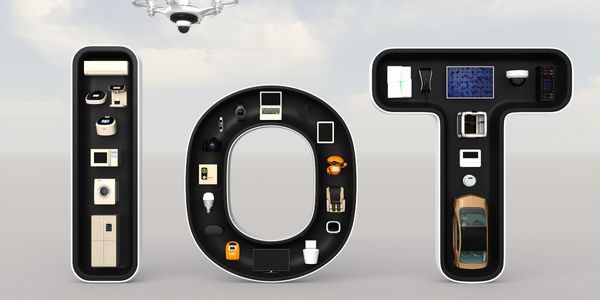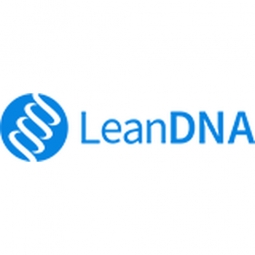
Technology Category
- Functional Applications - Enterprise Resource Planning Systems (ERP)
- Functional Applications - Inventory Management Systems
Applicable Industries
- Electronics
- Equipment & Machinery
Applicable Functions
- Procurement
- Warehouse & Inventory Management
Use Cases
- Inventory Management
- Picking, Sorting & Positioning
Services
- System Integration
The Customer
Not Disclosed
About The Customer
The customer is a global leader in electronic instrument manufacturing. They faced challenges in managing their inventory due to varying demand for different items, which complicated their purchasing process and affected supply to the manufacturing floor. This put their factories at risk of production-halting critical shortages. The management of this complexity was further challenged by an unwieldy ERP system and a lack of total visibility into operations. The company aimed to improve their organizational shortage communication and achieve ambitious inventory reduction goals.
The Challenge
In 2019, a global leader in electronic instrument manufacturing aimed to improve their organizational shortage communication and achieve ambitious inventory reduction goals. The company's demand varied from item to item, which complicated their inventory purchasing process and affected supply to the manufacturing floor. This put factories at risk of production-halting critical shortages. The management of this complexity was challenged by an unwieldy ERP system and a lack of total visibility into operations. Establishing optimal order policies for inventory management was possible in the ERP, but it required manual ABC analyses, a cumbersome process that took three to six months. The team viewed these analyses at a quarterly cadence, arguably too infrequently to react to market demand. Metrics around action items, time management, usage, and average demand were not available to the team in their ERP system.
The Solution
To make the organization’s procurement operation leaner, the team partnered with LeanDNA to improve visibility, monitoring, automatic reporting, daily prioritization of inventory actions, and collaboration within their procurement team. LeanDNA enabled access to metrics and pre-built dashboards that show validated data and up-to-date inventory levels. This new visibility allowed for more efficient monitoring and command over inventory actions across multiple departments and levels of the business. The manufacturing team used LeanDNA’s Inventory Burn-Off Chart as guidance to view predicted inventory levels and opportunities should they take the appropriate, efficient actions. They used these capabilities to set accurate, achievable goals. With clear goals established, actions and metrics were then surfaced in LeanDNA and automatically prioritized by the largest projected impact on inventory reduction. LeanDNA also prioritized critical shortages; the Line of Balance report enabled buyers to see a future shortage and adjust PO deliveries accordingly.
Operational Impact
Quantitative Benefit

Case Study missing?
Start adding your own!
Register with your work email and create a new case study profile for your business.
Related Case Studies.

Case Study
Smart Water Filtration Systems
Before working with Ayla Networks, Ozner was already using cloud connectivity to identify and solve water-filtration system malfunctions as well as to monitor filter cartridges for replacements.But, in June 2015, Ozner executives talked with Ayla about how the company might further improve its water systems with IoT technology. They liked what they heard from Ayla, but the executives needed to be sure that Ayla’s Agile IoT Platform provided the security and reliability Ozner required.

Case Study
IoT enabled Fleet Management with MindSphere
In view of growing competition, Gämmerler had a strong need to remain competitive via process optimization, reliability and gentle handling of printed products, even at highest press speeds. In addition, a digitalization initiative also included developing a key differentiation via data-driven services offers.

Case Study
Remote Temperature Monitoring of Perishable Goods Saves Money
RMONI was facing temperature monitoring challenges in a cold chain business. A cold chain must be established and maintained to ensure goods have been properly refrigerated during every step of the process, making temperature monitoring a critical business function. Manual registration practice can be very costly, labor intensive and prone to mistakes.

Case Study
Predictive Maintenance for Industrial Chillers
For global leaders in the industrial chiller manufacturing, reliability of the entire production process is of the utmost importance. Chillers are refrigeration systems that produce ice water to provide cooling for a process or industrial application. One of those leaders sought a way to respond to asset performance issues, even before they occur. The intelligence to guarantee maximum reliability of cooling devices is embedded (pre-alarming). A pre-alarming phase means that the cooling device still works, but symptoms may appear, telling manufacturers that a failure is likely to occur in the near future. Chillers who are not internet connected at that moment, provide little insight in this pre-alarming phase.

Case Study
Premium Appliance Producer Innovates with Internet of Everything
Sub-Zero faced the largest product launch in the company’s history:It wanted to launch 60 new products as scheduled while simultaneously opening a new “greenfield” production facility, yet still adhering to stringent quality requirements and manage issues from new supply-chain partners. A the same time, it wanted to increase staff productivity time and collaboration while reducing travel and costs.




